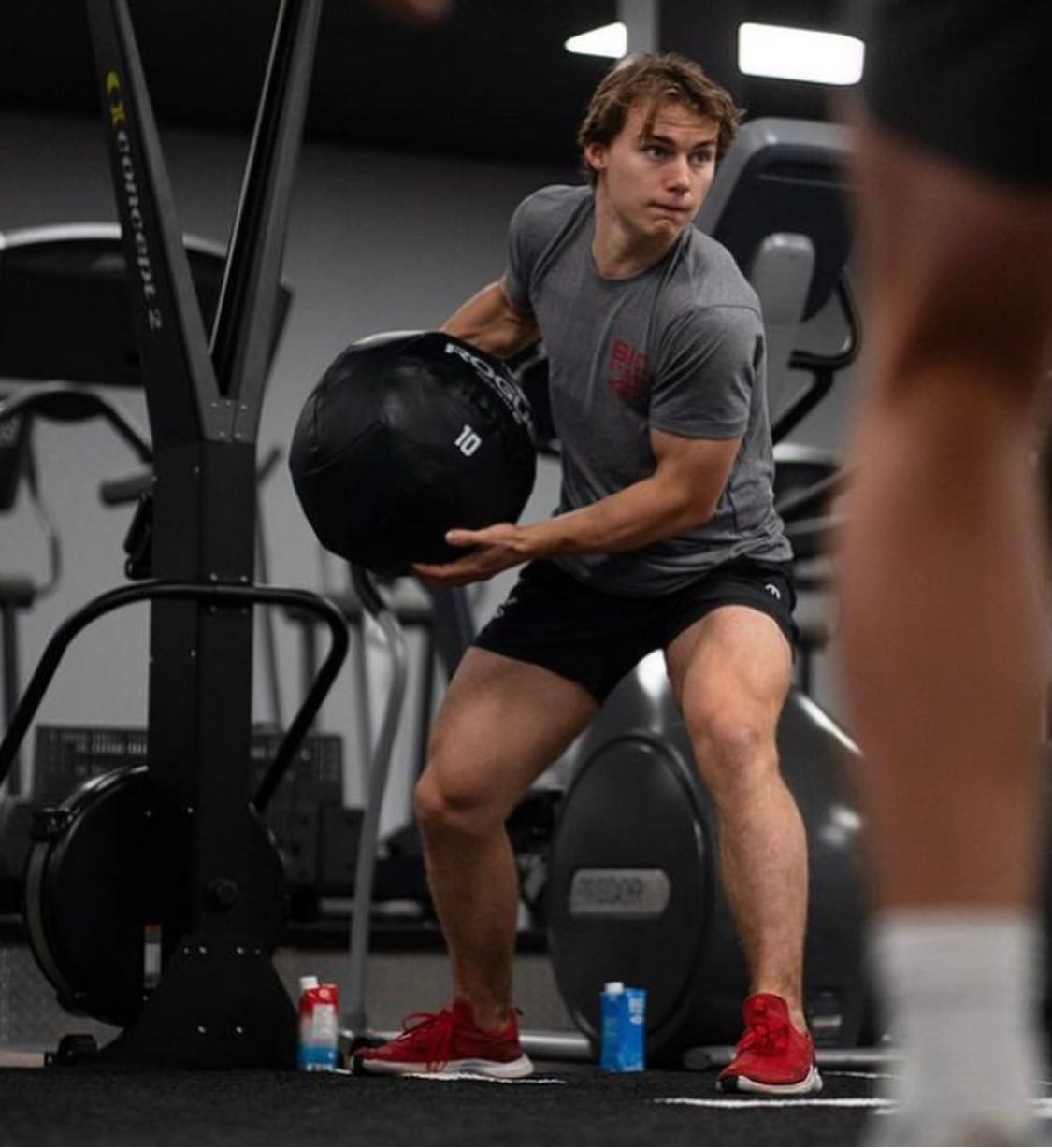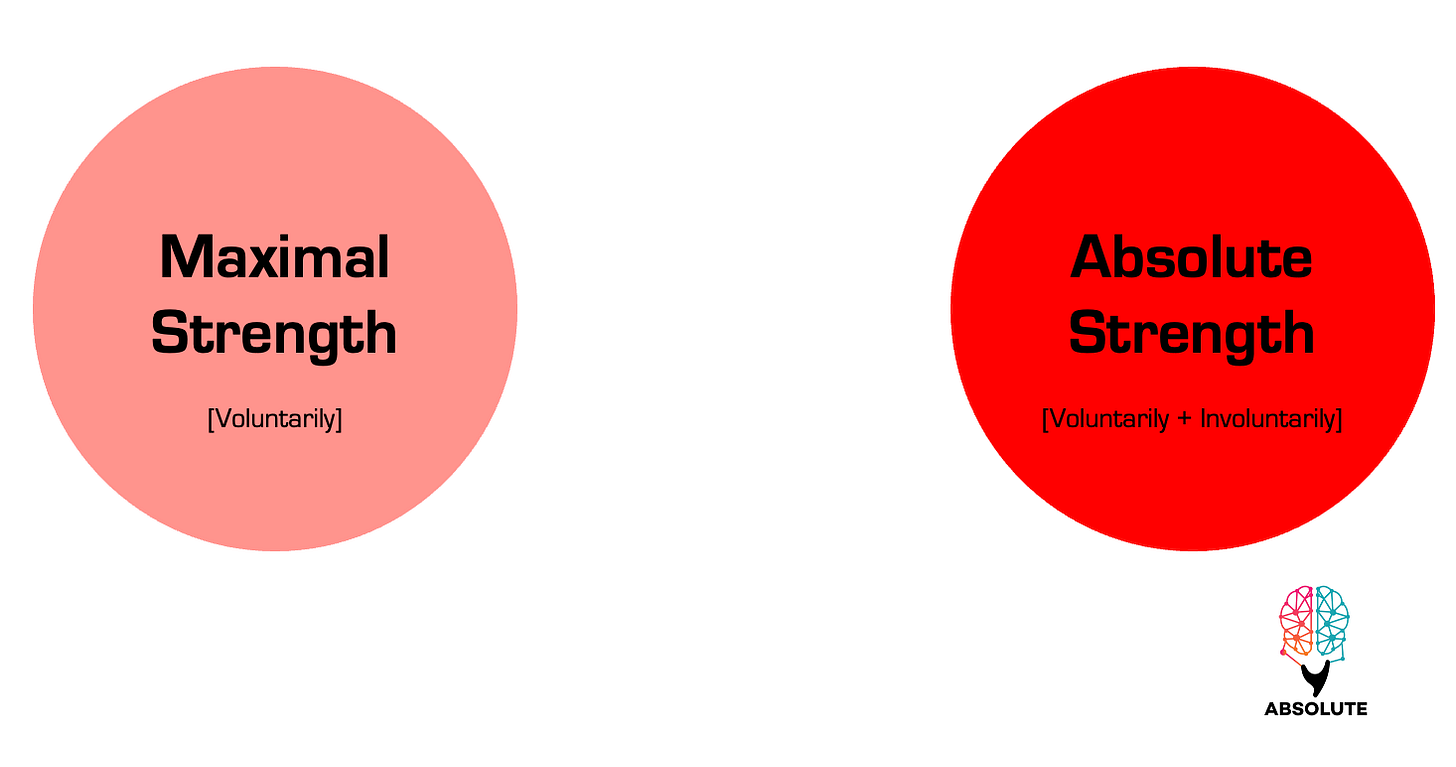
There is a difference between training for absolute strength and training to increase absolute strength - oftentimes, this difference is overlooked. We have written extensively about the training strategies we utilize in our programming practice at Absolute to train for Point B of Absolute Strength. This essay will introduce the concept of training to increase absolute strength, as well as the training strategies we utilize.
In talking recently with other strength practitioners about utilizing conjugate periodization to train for special strengths, an interesting question was brought up, which was: “I know you can increase the maximal strength of an athlete, but can you train to increase the absolute strength of an athlete?” This is a subject matter that we have put a lot of thought into, and we have come to the conclusion that, yes, of course, you can train to increase absolute strength - but it is different than training for absolute strength.
Absolute Strength vs. Maximal Strength
Before going through the different training strategies that we use at Absolute in our training practice to increase absolute strength, let’s first define absolute strength, and maximal strength, and understand the difference between them.
The absolute strength of a muscle means its maximal strength plus the reserve protected by the autonomic nervous system, which cannot be voluntarily generated (Tidow 1990).1
The maximal strength of a muscle, or a muscle group in a given movement, equals the highest external resistance an athlete can overcome or hold with voluntary mobilization of his or her neuromuscular system (Plantonov 1997).2
More simply, absolute strength is the magnitude of the force that can be generated both voluntarily and involuntarily. Whereas, maximal strength is the amount of force that can be generated voluntarily only (see image below). Absolute strength can be approximately assessed by a painful electrostimulation combined with maximal voluntary contraction.3

The Muscular Strength Deficit
The muscular strength deficit (MSD) is the difference between absolute strength and maximal strength (see image below). Dr. Zatsiorsky defines the MSD as: “The ‘hidden potential’ of a human muscle to develop higher forces that can also be demonstrated by electrostimulation.”4 Simply put, the MSD is the percentage of “strength” that you are NOT able to voluntarily express (i.e., generate) in any given movement (i.e., strength output). Strength is in parentheses as we at Absolute understand that strength is not a specific thing but is a dynamic behaviour that can be influenced and developed over time through the systematic programming and performing of specific training work.

Training for Absolute Strength means closing the Muscular Strength Deficit.
It should be apparent that physical training is the only mechanism that closes the MSD. It is a physiological fact that through specific systematic training, individuals can develop their “hidden potential” - that is: increase the magnitude of force they can voluntarily generate, bringing their full potential to reality. The Maximal Effort (ME) method is the specific training method that best closes this deficit, and this is why Dr. Zatsiorsky refers to the ME method as superior.5 We have extensively discussed how we at Absolute utilize the Max Effort method in our training to acquire/sustain Point B.
There is a corollary that needs to be mentioned with respect to the ME method and absolute strength:
The Maximal Effort method is the superior method of training for absolute strength, but it is not the superior method of training to increase absolute strength.
Training to Increase Absolute Strength Elicits “Untapped Potential”
At Absolute, we view “hidden potential,” as Dr. Zatsiorsky defines it, as simply untapped potential. Sadly and unfortunately, more times than not, this potential will remain untapped due to the usage of suboptimal training methods - a topic we discussed in: Untrained & sub-optimally trained nervous systems: a limiting constraint to high performance. This is the fault of the strength coach and not the fault of the athlete who is performing suboptimal training that will not lead to totally unleashing them to their fullest potential of generating the largest magnitude of force.
A real-life example of suboptimal training would be the usage of the repetition method (i.e., repeated efforts) instead of the utilization of the maximal effort method - when training for absolute strength. This is a real issue in modern sports training today that is limiting constraint on the athletes of this generation.
Training to Increase Absolute Strength vs. Training for Absolute Strength
Keep reading with a 7-day free trial
Subscribe to Absolute: The Art and Science of Human Performance to keep reading this post and get 7 days of free access to the full post archives.




